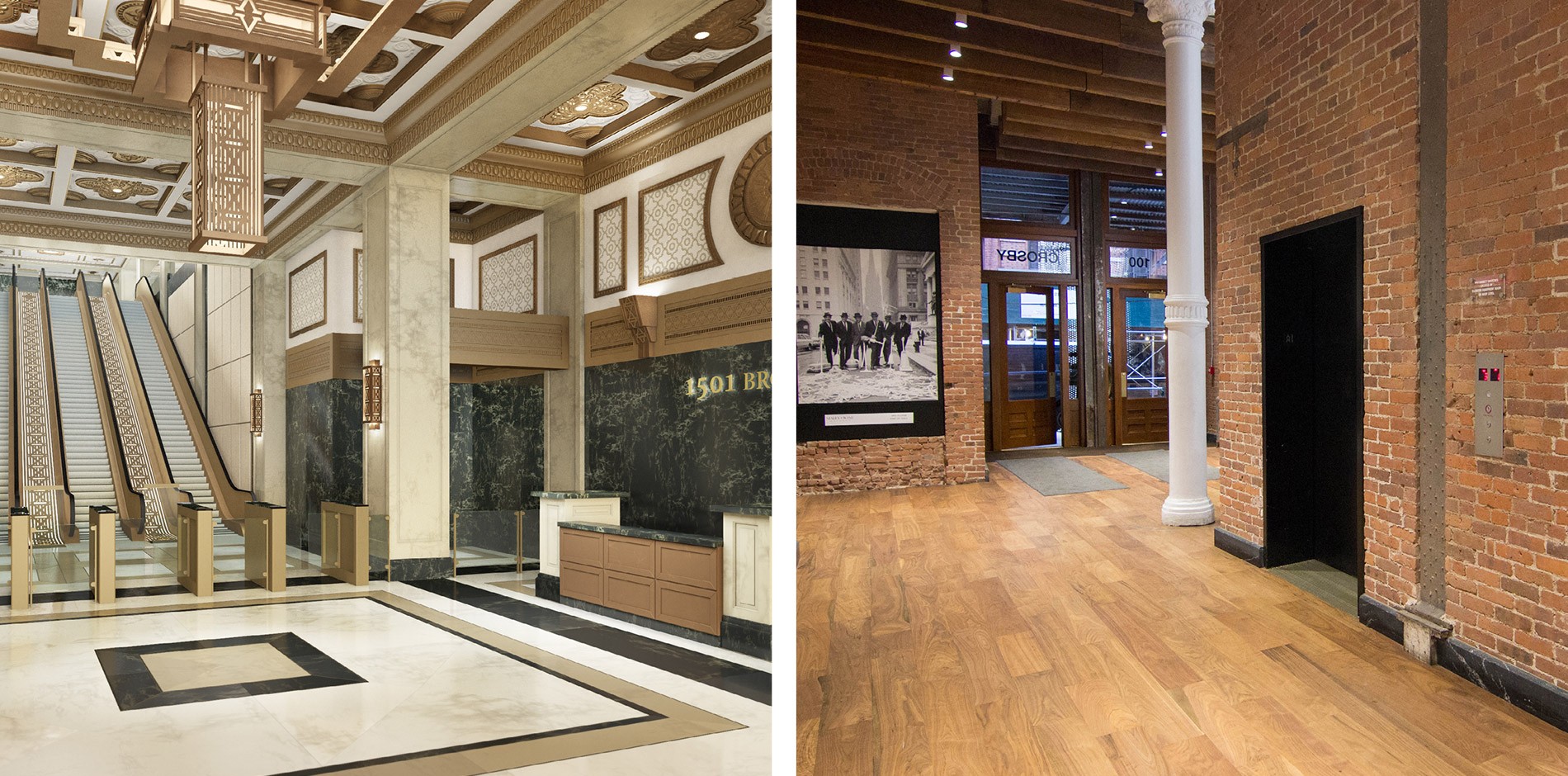Lobby repositioning has become an increasingly popular trend in major cities, with New York in the lead, where historic buildings from the 1900s were built with lobbies on major streets—such as Broadway and Fifth Avenue. Given the rising value of rental prices on these major thoroughfares, owners have found a lucrative market in repositioning these lobbies from main avenues to side streets to convert the space into more valuable retail.
One client moved a lobby space—originally built in the 1890s—from Broadway onto Crosby Street. This complex project required opening five floors for structural work, including floors two through five, which were supported with preloaded steel girders on top of occupied tenant spaces. Two sets of stairs were eliminated to accommodate additional retail and office space. After the project was completed on an expedited schedule, it enabled the building’s anchor retail tenant to open their newly expanded space on Broadway, and the landlord to reposition offices throughout the building for tenants who wanted to expand.
Repositioning work can be costly and time consuming, but it can also add significant value to the property and increase rental rates. In the heart of Times Square, one landlord found this so profitable that they were willing to spend three years under construction in order to reposition. The work required two new elevators, one of which had to be suspended over the Hard Rock Café during installation. The rents in this location range north of $2,000 per square foot, which will enable the owner to recover the investment within just a few years.
Many landlords in major cities have already identified prime retail spaces and have proposed to reposition their lobby to other areas of the building. This brings benefits to everyone: a prime location for retailers, a discreet rear entrance for office tenants, and added value for the property owner.
By: Shawn Taylor, Director of Construction Operations
